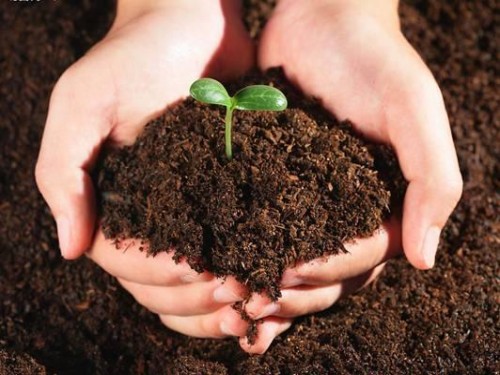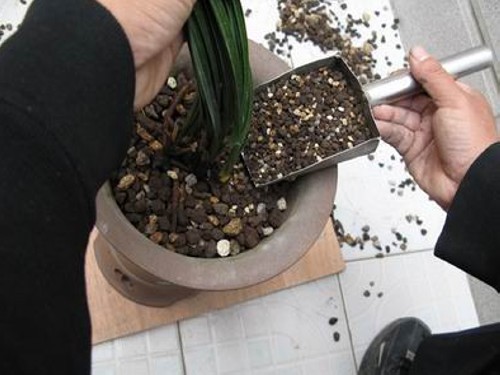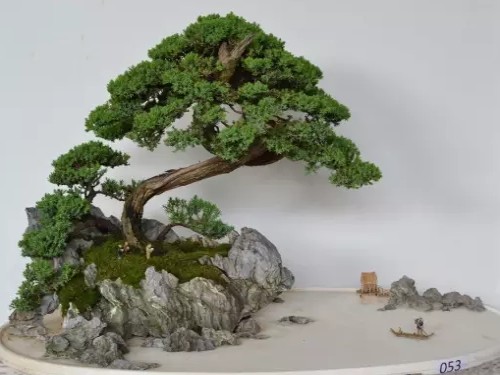How to prepare culture soil-preparation method of bonsai culture soil
Soil is the basis of plant growth. In order to cultivate bonsai plants, we must first make a good soil. The growth of plants in the limited basin soil is directly related to whether the basin soil is suitable for plant growth habits. Potted soil can fix plants and supply nutrition, water and air. General pot use requires sandy soil with more humus, loose and fertile, good drainage, strong water retention and good air permeability.
Bonsai has higher requirements for soil use, and it is very difficult for residents living in cities and towns, especially in big cities, to dig ripe soil on the spot. You can buy it from a florist with the soil, or prepare your own cultivation soil.

There are mainly the following kinds of cultural soil materials:
1. Humus soil
Collect leaves, weeds, medicine dregs, old grass bags (shredded), sawn wood, livestock dung, human feces and urine, deteriorated salt-free food that can not be eaten, etc., use the old basin soil or pastoral soil, layer by layer in the pit or basin, pour water thoroughly, cover it with soil, after a summer of high-temperature fermentation, it can be dug out and used.
2. Furnace ash
For briquettes or honeycomb coal made of pulverized coal and appropriate amount of loess, the furnace ash is better after combustion. This kind of furnace ash is often porous and granular and contains many kinds of substances such as calcium, potassium, phosphorus, magnesium, iron and so on. It has good performance of water and fertilizer conservation and light weight, so it is a good material for preparing culture soil.
3. Coarse sand
The diameter of sand particles is about 1.5 mm, with pure texture and good drainage and air permeability.
4. Sandy soil
Pure texture, fine sand, good drainage and air permeability.
5. Mountain forest rotten leaf soil
Grooves and depressions in hillsides and hills often accumulate dead branches, fallen leaves, weeds and droppings of birds and animals, which rot after years of sun and rain, and naturally form rotten leaf soil, which can be dug and used.
6. Animal hooves
Including sliced hooves of horses, donkeys, cattle, sheep, pigs and other animals.
7. Bone meal
Bones such as birds, animals and fish are steamed under high pressure and smashed into broken noodles.
According to the different needs of plants, the above materials were prepared into culture soil in an appropriate proportion. Ordinary cultivated soil is often prepared according to humus soil: sand surface soil: furnace ash = 6:2:2; it can also be prepared with mountain forest rot leaf soil: coarse sand: sand surface soil = 6:2:2. The ordinary culture soil is neutral or weakly acidic, which is suitable for the growth needs of many kinds of bonsai plants. before use, the culture soil should be screened (the sieve hole should not be too small), remove bricks, tiles and larger branches and weeds that have not yet rotted, and carry out disinfection treatment to prevent diseases and insect pests.
General bonsai soil does not need to be specially disinfected, it can be used in the sun for a few days, because flowers and trees have a certain resistance, in general, it is not easy to get sick. In addition, the soil contains a large number of microorganisms, although the tiny organisms invisible to the naked eye are very small, but they play a great role. Without it, the soil is difficult to form and the soil fertility cannot be brought into full play. Organic fertilizers applied to the soil, including animal residues, are decomposed by microorganisms before they become fertilizers that are absorbed by plants. If you disinfect it with medicine or heating, it will kill the microorganisms in the soil, and the organic matter in it cannot be decomposed, so it is difficult to guarantee the fertility of the soil, which is disadvantageous to the growth of flowers and trees.
What are the commonly used culture soil formulations for bonsai?
1. General formula
(1) rotten leaf soil (or peat soil): garden soil: River sand: bone meal = 40 (or peat soil), rotten leaf soil (or peat soil), river sand, mature organic fertilizer, calcium superphosphate, etc., according to 5RV 3.5 (or peat soil), while adding about 0.2% sulfur powder, it is used to cultivate acidic flowers and trees such as camellia, rhododendron and so on.
(2) Mud: garden soil: humus: bran ash (plant ash) = 2 (2) or garden soil: compost: River sand: plant ash = 4 (4) (2). It is suitable for begonia and asparagus.
(3) Mud: humus: garden soil = 1:1:4, suitable for acidic plants such as Milan, kumquat, jasmine, basil and so on.
(4) 5 garden soil, 4 rotten leaf soil and 1 river sand are suitable for woody flowers.
(5) 1 part of yellow sand, 2 parts of loam, 1 part of humus and 0.5 part of dry and rotten cattle manure are suitable for palms.
(6) 3 parts of peat and 1 part of yellow sand are suitable for ornamental plants growing in large containers.
2. Main flowers and trees nutritious soil
(1) Camellia, etc.: 3-4 portions of rotten leaf soil, mixed with garden soil and the same amount of river sand, plus a small amount of bone powder.
(2) Rhododendron: pine needle soil: rotten horse dung or cow dung = 1:1.
(3) Rubber tree, Zhu Jiao, etc.: rotten leaf soil: garden soil: River sand = 3:5:2.
(4) Palms, coconuts, etc.: 5 in garden soil and 2 in river sand.
(5) pile scenery and potted trees: an appropriate amount of rotten leaf soil and compost soil, 1-2 parts of river sand must be guaranteed to facilitate drainage.
Time: 2019-05-22 Click:
- Prev

The method of turning the bonsai basin
The process of replanting potted plants in pots is called turning over pots. According to the needs of modeling, either change the deep basin into a shallow basin, or change the position or posture of the trees, and carry out the necessary processing to make the bonsai more beautiful and more ornamental. Some potted flowers and trees suffer from diseases and insect pests
- Next

Notes on purchasing bonsai
What is bonsai? Bonsai art originates from our country, has a long history and has a long history. It takes pots as paper and trees as painting. Through ingenious processing and cultivation, it uses traditional Chinese painting techniques that are thousands of miles away, small and medium-sized to see big, giving people a tree and ancient trees to see the sky.
Related
- Fuxing push coffee new agricultural production and marketing class: lack of small-scale processing plants
- Jujube rice field leisure farm deep ploughing Yilan for five years to create a space for organic food and play
- Nongyu Farm-A trial of organic papaya for brave women with advanced technology
- Four points for attention in the prevention and control of diseases and insect pests of edible fungi
- How to add nutrient solution to Edible Fungi
- Is there any good way to control edible fungus mites?
- Open Inoculation Technology of Edible Fungi
- Is there any clever way to use fertilizer for edible fungus in winter?
- What agents are used to kill the pathogens of edible fungi in the mushroom shed?
- Rapid drying of Edible Fungi

